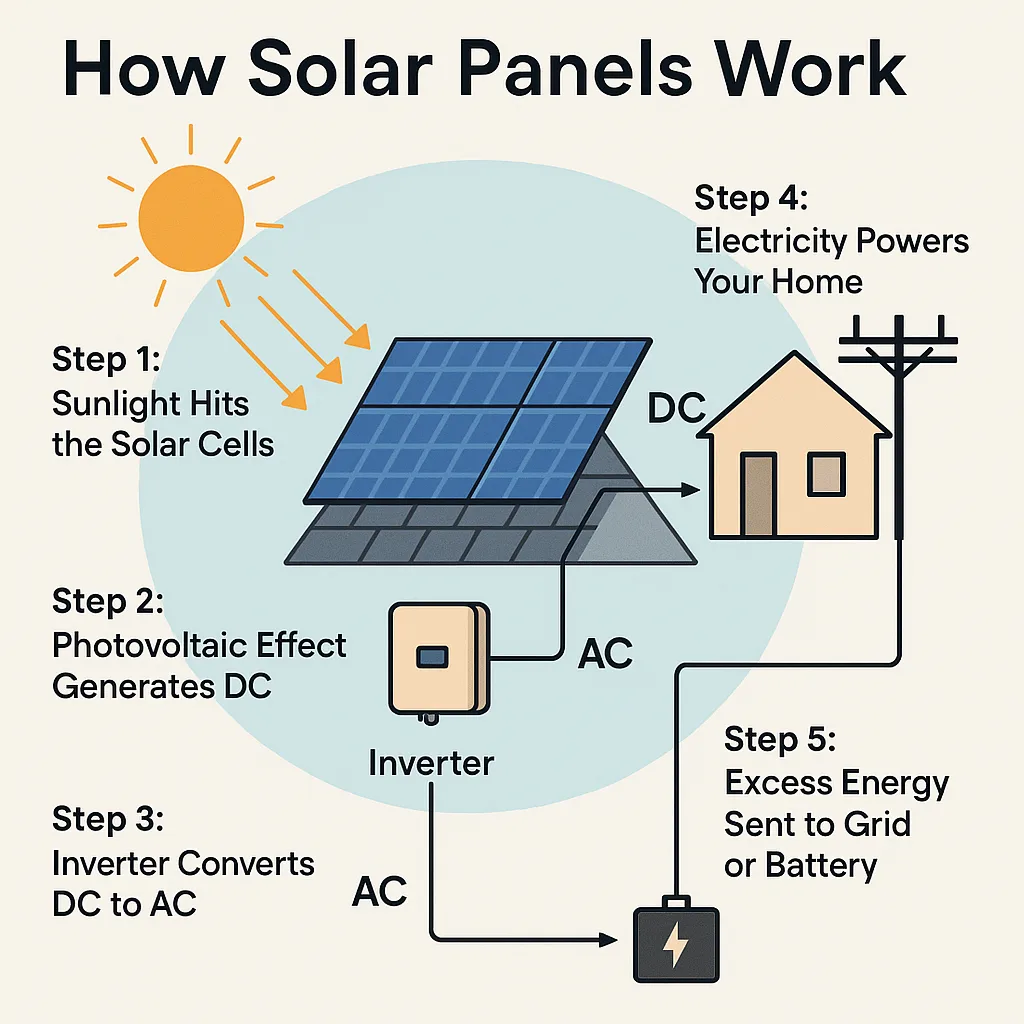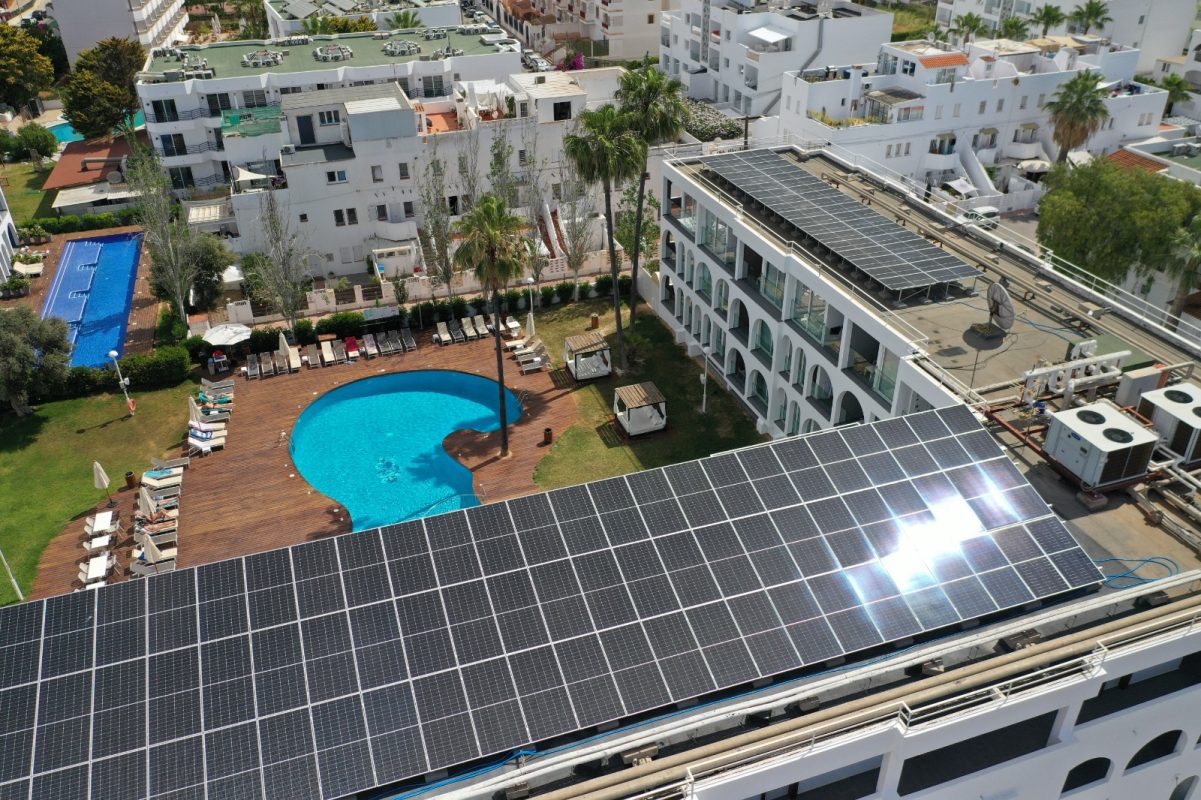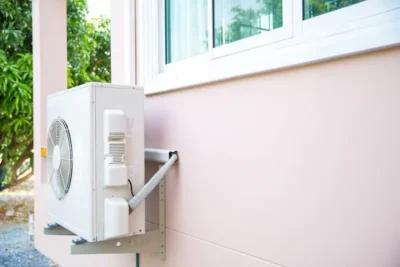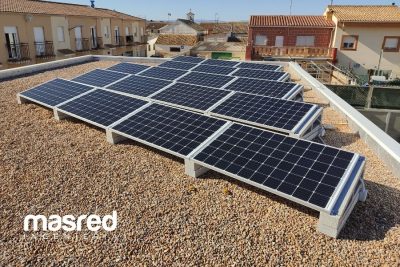Sustainability and energy savings are becoming increasingly important in a world where measures to protect the planet are a must.
Legislation often mentions the need to switch to clean energy sources and, in order to get the public to switch to these, tax incentive programmes and economic aids are launched to make their installation much cheaper.
A solar power system is a fantastic option for individuals and businesses, easy to install and maintain, affordable and effective.
What are solar panels and how do they work?
Understanding solar panels
Solar panels are devices that have the ability to convert sunlight into electricity. The technology used for this purpose consists of photovoltaic cells, made of semiconductor materials that generate direct current (DC) when sunlight hits them.
This energy is transformed from DC to AC and fed into the household installation to power appliances, lights and any other device that runs on electricity.
A solar power system includes solar panels, an inverter and, sometimes, a battery. The place where solar panels are usually installed is on the roofs of houses and buildings, facing the sunniest orientation.
A typical solar power system includes:
- Solar panels, to capture sunlight.
- An inverter, to convert the electricity.
- Optional batteries, to store excess energy for use at night or during cloudy periods.
Panels are usually installed on rooftops, ideally facing south (in the Northern Hemisphere) or the sunniest direction, to maximize exposure to sunlight throughout the day. We guide you through the process of selecting and installing a solar panel system tailored to your space.

How do solar panels work?
Solar panels work by capturing sunlight and transforming it into usable electricity through a process known as the photovoltaic effect. Here’s a step-by-step breakdown of how this transformation happens:
Step 1: Sunlight hits the solar cells
The process begins when sunlight reaches the surface of the solar panels, which are made up of multiple photovoltaic (PV) cells. These cells are built with semiconductor materials, usually silicon, that react when exposed to light.
Step 2: The photovoltaic effect generates direct current (DC)
When sunlight strikes the PV cells, the energy from the sun excites the electrons in the semiconductor material. This reaction causes the electrons to move, generating a flow of direct current (DC) electricity.
Step 3: An inverter converts DC to AC electricity
Most household appliances use alternating current (AC), not DC. That’s why a solar inverter is an essential part of any solar system. It takes the DC generated by the panels and converts it into AC, making the electricity usable in your home or business.
Step 4: Electricity powers your home or business
Once converted, the electricity flows through your electrical system and can be used to power lights, appliances, charging devices, and more, just like electricity from the grid.
Step 5: Excess energy is sent to the grid or stored in batteries
If your system produces more electricity than you need, that surplus energy can either:
- Be fed into the local power grid, often earning you credits (depending on local net metering policies), or
- Be stored in batteries for later use—particularly useful at night or on cloudy days.
Step 6: Batteries ensure energy availability at night
For homes or systems designed to be off-grid or self-sufficient, batteries are essential. They allow you to store energy generated during the day and use it when the sun isn’t shining.
Our team of experts analyzes the project’s characteristics to design an efficient photovoltaic energy solution.
Benefits of using solar panels for your home or business
Using solar panels at home or installing them in a business has many advantages.
Energy and money savings
One of the most immediate benefits of solar energy is the reduction in electricity bills. According to the International Renewable Energy Agency (IRENA), households can save between 40% and 70% on electricity costs per year, depending on system size and consumption habits.
In Spain, the IDAE (Instituto para la Diversificación y Ahorro de la Energía) estimates that an average 4 kWp residential solar installation can generate up to 6,000 kWh/year, enough to cover 80%–100% of the electricity needs of a typical household. That translates into annual savings of over 800–1,000€, depending on location and tariffs.
Source: IRENA Renewable Energy Benefits Report, 2022; IDAE – Guía Técnica de Autoconsumo, 2023.
Sustainability and environmental impact
Solar energy is 100% clean and renewable, producing zero greenhouse gas emissions during operation. For every kWh generated with solar instead of fossil fuels, approximately 700g of CO₂ are avoided.
According to the European Environment Agency, switching to solar panels can reduce a home’s carbon footprint by over 1,000 kg of CO₂ per year.
Source: EEA Report No. 13/2021 – Renewable energy in Europe.
Increased property value
Homes with solar panels tend to have higher market value and sell faster. A study by Zillow (US) found that properties with solar installations sell for an average of 4.1% more than comparable homes without them. In Spain, real estate portals como Idealista también reflejan este incremento, especialmente en zonas con alta radiación solar.
Source: Zillow Economic Research, “Homes with Solar Panels Sell for More”, 2019.
Energy independence and stability
Installing solar panels with or without batteries provides a level of energy independence. During periods of grid instability or price volatility, having your own generation system ensures stable supply and protection against rising costs.
Additionally, when combined with battery storage systems, users can cover up to 90% of their annual consumption, making them largely autonomous from external suppliers.
Source: European Commission – Solar Energy Strategy, 2022.

Key factors to consider before installing solar panels
With these great advantages, it is understandable that many individuals consider switching to solar power. What are the key factors to consider before installing solar panels?
- Building orientation. The sun exposure is crucial for the system to work, so the building’s geographical location and orientation and the amount of sunlight it gets throughout the year is the first thing to consider.
- Roof condition. Make sure the roof is in perfect shape before installing panels to avoid unpleasant surprises.
- Regulations. Check your local regulations and make sure you have all the permits and meet all the criteria required to install solar panels.
- Energy usage. Sizing is important, so make sure you study your energy usage and the amount of electricity your installation will be able to produce.
- Budget. Notice a solar power system is an investment, so initial expenses can be high. First, check if there are any government aids available and, if you need it, consider financing options. Keep in mind this is an investment that is sure to pay off.
How solar panels can save you money and reduce your carbon footprint
Whether you are concerned about your energy bills or about your carbon footprint, solar panels are a great solution and a safe investment.
The energy savings month after month will pay for the initial installation shortly, and you will contribute to mitigating climate change and taking care of the planet at the same time.
All in all, solar panels are not just a trend, they are a reliable source of energy that millions are switching to because of its sustainability, efficiency and costs. A smart option for homes and businesses.








